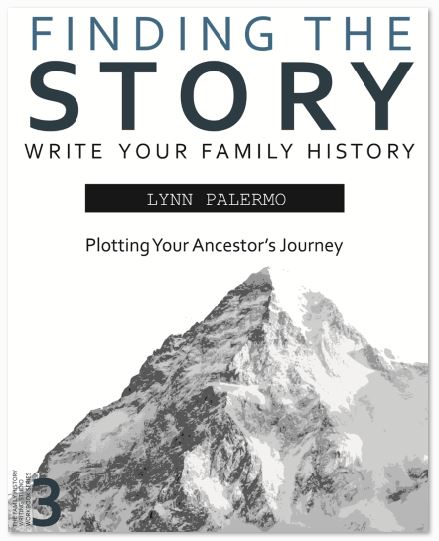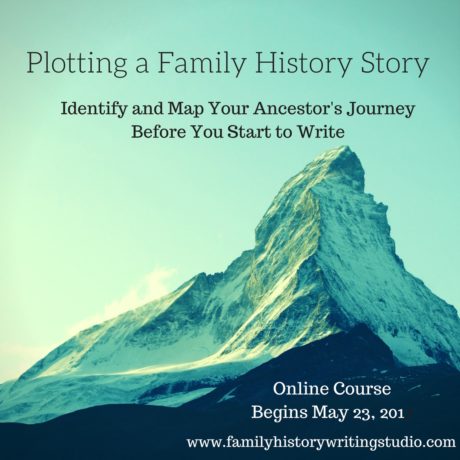Often we are held back from writing our family history stories because we just don’t know where to start and in turn, where to end it.
If we’ve managed to find a starting point, we often find ourselves in the middle, floundering, being pulled in different directions. This is often because we’ve picked our starting pointing out of midair giving little thought to why we chose that starting point and how we are going to proceed. That’s why it’s important to have a plan.
Identify a Goal
Sometimes we immediately think that our ancestor’s stories begin with their birth and naturally should end with their death. While you can take that approach, a far more interesting and engaging way to tell your ancestor’s story is to highlight a period, an event, a day or a pivotal moment in your ancestor’s life. This time-period should show when he or she has overcome significant obstacles in obtaining this want or a goal in their life.
We can discover these goals by looking at the events that played out in your ancestor’s lives, immigration, marriage, land owner, business owner, education, children, freedom, the list goes on. Start by identifying a goal your ancestor pursued in their life and structure your story around it.
Once you’ve identified that goal, you should easily be able to find the obstacles your ancestor overcame in pursuit of his goal. Click here to learn how to find the conflicts and obstacles in your story.
Where to Start Your Story
Start your story just before your ancestor made a change in his life in seeking the identified goal. When did he make a conscious change in his life to pursue his goal?
Show us your ancestor in his normal life before he made that change before he began to reach for that goal. Let us see the motivation for this goal. What in his history drives him to achieve this goal. This helps your reader to understand your ancestor’s state of mind, and why this objective is so important to him.
As you proceed through your story, you can share the struggles he overcame, one after another, all while also sharing some insight into his decisions, his motivations and what is at stake should he fail. Click here to learn more about goals, motivations and stakes.
There was always plenty at stake if our ancestor failed, poverty, freedom, jail, poorhouses, conscription are just a few. Allow the reader to see the possible risks it keeps them tuned into your story.
Where to End Your Story
Your story ends when your ancestor achieves his goal. In the conclusion of your story, you can show your reader how his ambition changed him and his life. While it will be natural to show us how his life changed physically, don’t forget to tell us how he changed emotionally. In your resolution, you want to demonstrate not only how the outward circumstances of his life altered but how does he perceive his life and the world around him after achieving his goal.
Structuring your ancestor’s story around a particular event, a monumental moment or an achievement helps you to write an engaging tale with highs and lows, rather than a linear plot of birth to death. Give your reader a reason to root for your ancestor, engage in the story, all the while delivering the information and facts of your research.
When you take some time to share your ancestor’s story around a goal, with obstacles, you give  your readers an ancestor they can relate to, and when they can relate they will be more inclined to absorb your story and take away its meaning and importance in their life.
your readers an ancestor they can relate to, and when they can relate they will be more inclined to absorb your story and take away its meaning and importance in their life.
Ultimately isn’t that what we want from our stories to affect how our readers think about their ancestors and ultimately themselves.
To learn more about structuring your ancestor’s story pick up a copy of Finding the Story in our shop or learn more about our upcoming course Plotting a Family History Story.


